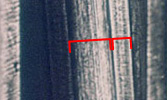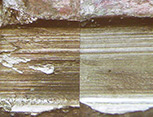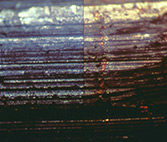- 01: Introduction
- 02: History
- 03: Propellants, Firearms, and Ammunition Development
- 04: Modern Firearms Manufacture
- 05: Small Arms Ammunition
- 06: Evidence Handling Procedures
- Introduction
- Objectives
- AFTE Knowledge and Ability Factors
- Types of Evidence
- Associative Evidence
- The Crime Scene
- Evidence Submission
- Laboratory Evidence Handling
- Case Tracking Within the Laboratory
- Firearm and Toolmark Examination Considerations
- Selected Bibliography
- 07: Equipment and Instrumentation
- 08: Examination of Firearms
- 09: Cartridge and Shotshell Examination
- 10: Characterization and Evaluation of Fired Projectiles
- 11: Bullet Comparison and Identification
- 12: Gunshot Residue and Distance Determination
- 13: Toolmark Identification
- 14: Communicating Results
- Resources


Class and Individual Characteristics
Home > Evidence Handling Procedures > Types of Evidence > Class and Individual Characteristics
All evidence bears class characteristics. Individual characteristics may or may not be present.
Evidence that possesses class characteristics may be referred to as class evidence. Similarly, evidence that possesses individual characteristics may be referred to as individual evidence.
Both class and individual evidence have value; however, it typically takes considerably more class evidence (and time for collection and analysis) to have the same weight and significance as a single item of individual evidence.
Criminal cases based solely on class evidence are more difficult to prove and require more work, but the results can be just as significant. To put it in perspective, in terms of probative value in the courtroom, it usually takes a considerable combination of class evidence to equate to a single item of individual evidence.
| Class and Individual Characteristics | ||
| Characteristic | Definition | Examples |
| Class Characteristics | Measurable features of an item that indicate a restricted group source based on design factors determined prior to manufacture May be shown to be like or consistent with a questioned source, although not uniquely identifiable with that source |

Example of lands and grooves |
| Subclass Characteristics | Discernible surface features of an object, more restrictive than class characteristics Produced incidental to manufacture Refer to a smaller group source (a subset of the class to which they belong) May arise from a source that changes over time |

Manufacturing marks on a |
| Individual Characteristics | Marks on an object produced by the random imperfections or irregularities on the surfaces of the tools used to manufacture the object Produced incidental to the manufacturing process and typically seen at microscopic level Can be produced on an object by use, abuse, and/or corrosion May be uniquely identifiable with a source |

Striation marks on a fired bullet |




